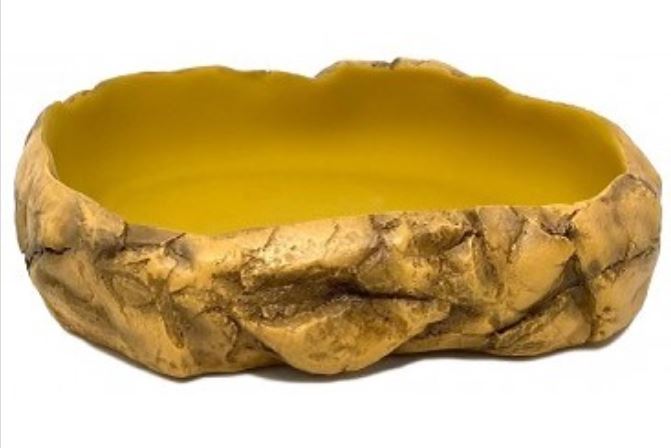If you want to ensure your pet is healthy, one of the things you should know is how to clean a reptile water bowl.
Cleaning a reptile water bowl is one of the most important things you can do for your pet. Not only does it keep their environment clean, but it also keeps them hydrated.
In this post, we will share some tips on how to properly clean out your reptile water bowl.
Related Posts:
- Best Heat Mat for Leopard Gecko
- Top 7 Leopard Gecko Starter Kits for Easy Setup
- How to Clean River Rocks for Turtle Tanks?
- How Often Should I Clean My Leopard Gecko Tank?
- How to Clean Reptile Substrate?
How to Clean a Reptile Water Bowl?
To clean your cage, use water that is hot and clean. If you want to use a cleaning product, use dish soap and elbow grease.
Then sanitize it with 10% bleach solution and rinse it off with hot water. Allow it to dry after that.
In a typical setup, the water bowl will be the only part that needs regular cleaning.
For those of you who neglect this task, here’s how to clean a reptile water bowl without spending much time and effort:
- Pour hot water into the bowl and let it sit for 10 minutes or so. This loosens up dirt and bacteria inside.
- Use a scrub brush to clean it. To be more efficient, use an old toothbrush because its bristles are stiff enough for this task without being too harsh on the plastic.
- Rinse the bowl thoroughly with warm water and dry it completely before using it again or adding fresh water.
- You should change out the water completely once every week to avoid the growth of algae and bacteria.
- Replace your bowl if it’s cracked or has dents in it since these can be breeding grounds for bacteria and parasites.
Alternatively, you could invest in a pet drinking fountain, which would save time on cleaning as well as being better for your reptile’s health.
How to Make a Homemade Reptile Water Bowl?
Materials:
- Clean, empty gallon water or milk jug that is un-drinkable (labeled as such)
- Scissors
- Rubber bands
- Marker pen
- Tile adhesive and grout (optional)
Instructions:
- Remove the label from the jug and discard.
- Use the marker pen to draw a line around the jug near the top (where you would normally cut it off). This way, if someone uses a really tall type of plant in there or a very large rock, you can just cut a little more off and use it for another day.
- Cut the water jug along the drawn line with scissors and discard the top half of the jug.
- Place the flat side of the water dish down on the countertop so that the open endpoints toward the ceiling, making it easier to fill from above later on.
- Using rubber bands, stretch them over the open bottom of the container so they are holding the water container up against the wall at about 2 to 3 inches from floor level. This is to keep your reptile from crawling inside or tipping over this dish.
- Check that the rubber bands are secure and then fill with water to within several inches of the top.
- Add a few drops of de-chlorinator (optional) and allow water to sit for at least 30 minutes before placing in the reptile enclosure (the chlorine evaporates quickly).
- For extra security, tile adhesive and grout can be used between the tiles or even silicone caulk applied around the outside to make it more permanent if you like. But if it’s kept out of reach, I personally wouldn’t worry about this step.
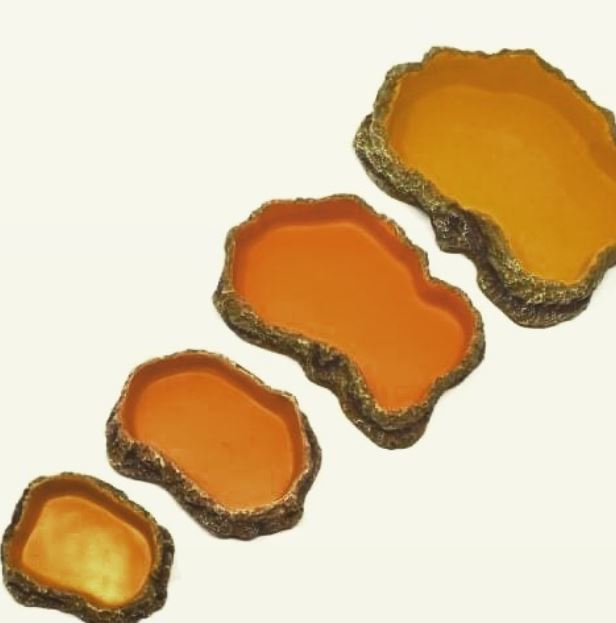
Do Snakes Need a Water Bowl?
A fresh supply of water is needed at all times, so it’s very important you provide snakes with a good quality bowl for drinking and bathing.
A snake needs to drink daily, especially if they are misted or sprayed with water during their weekly bath.
If you do spray them, this will help create humidity within the vivarium, which means they need to drink more as well as use the water dish for their normal drinking needs.
For those snakes that only require a weekly bath, make sure you leave them in their tub for as long as possible by placing larger rocks at the bottom of it to allow them room to out and not touch the sides.
What Size of Water Bowl Is Great for Snakes?
The size of the water supply is important, but you need to consider at least two sections in order for your snake to be able to submerge itself completely within the water.
If they only have one section, this means they may not drink as much as they should because their bodies will not be fully submerged and so might miss out on vital hydration.
The bowl needs to be big enough for them to properly stretch out and can happily fit a few rocks inside so they can soak up some heat from the sun.
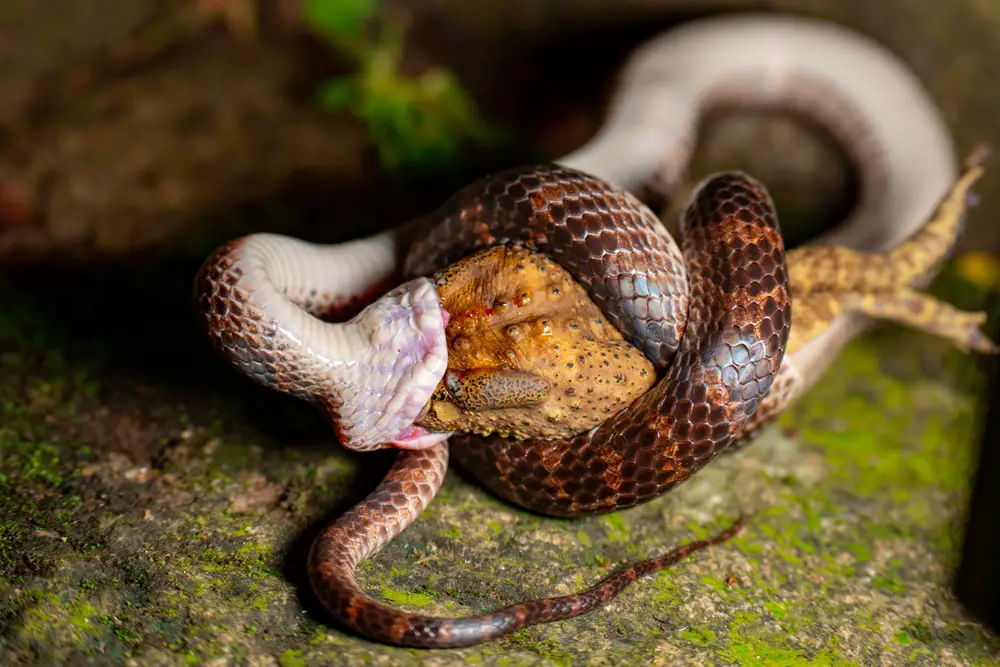
Should You Use Plastic Bowls or Carboard Bowls?
The type of material used for providing clean fresh drinking water is also very important due to bacterial build-up if it has been used by previous snakes that have died from health problems such as MBD or other diseases that need prompt veterinary attention.
You can’t see or smell any form of bacteria in water. You don’t know it is there until after your beloved pet dies from drinking it.
I recommend using a sterilized bowl at all times so you are not transferring previous diseases to your current snake.
Plastic bowls are ideal for containing water, but cardboard ones also have their benefits because they provide more grip.
The snakes will be able to crawl on top of them rather than slip off into the water if it is made of plastic.
You should also consider where you are going to keep the bowl within the vivarium itself.
Does it get direct sunlight? Is it close enough to basking spots for your snake to get easy access or should it be placed away from these spots?
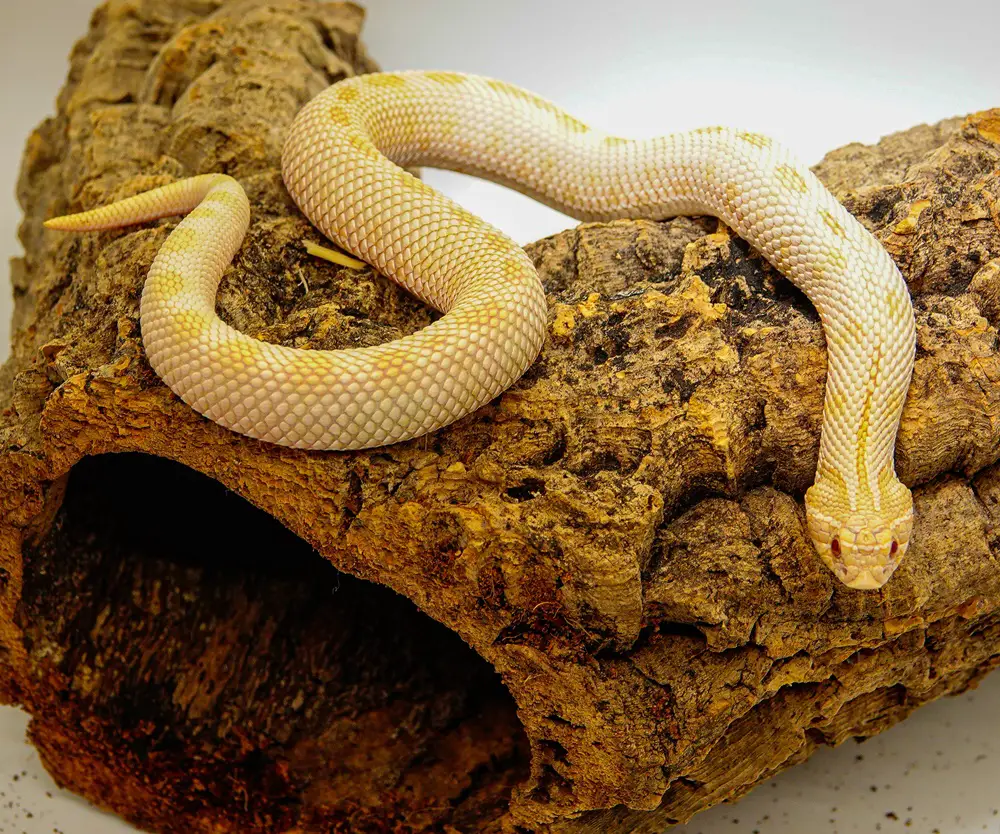
How Often Should You Clean a Snake’s Water Bowl?
Snakes are very clean animals and take great pleasure in taking regular baths.
The time interval between cleaning out the water bowl is simply based on how often your snake drinks. If they drink daily, then you only need to empty the old water and recharge it with fresh.
If they don’t intake much, consider changing at least once a week even though that may mean boiling the old water before simply pouring away.
This will keep bacteria under control and ensure their health remains tip-top when interacting within their vivarium habitat.
Remember that the water must be kept scrupulously clean at all times. Otherwise, severe health problems can arise such as swelling, blindness, and respiratory issues.
Never take any chances with your snake’s drinking water.
How to Choose the Right Vivarium for Snakes?
Snake water bowls can be different according to the type of vivarium you keep them in. Some are better than others for housing vipers and corn snakes.
The more open it is, the easier it is for your snake to see potential danger approaching, which means they will remain on high alert at all times rather than wandering about freely as they would do within a very large vivarium cage.
A lot of new snake owners make the mistake of placing their snakes on the show by using huge vivarium units that might look spectacular but are not always practical for our scaly friends.
If you only want to demonstrate certain species, then this isn’t really a problem. Just ensure you have fitted glass doors that can be easily closed to prevent escapes.
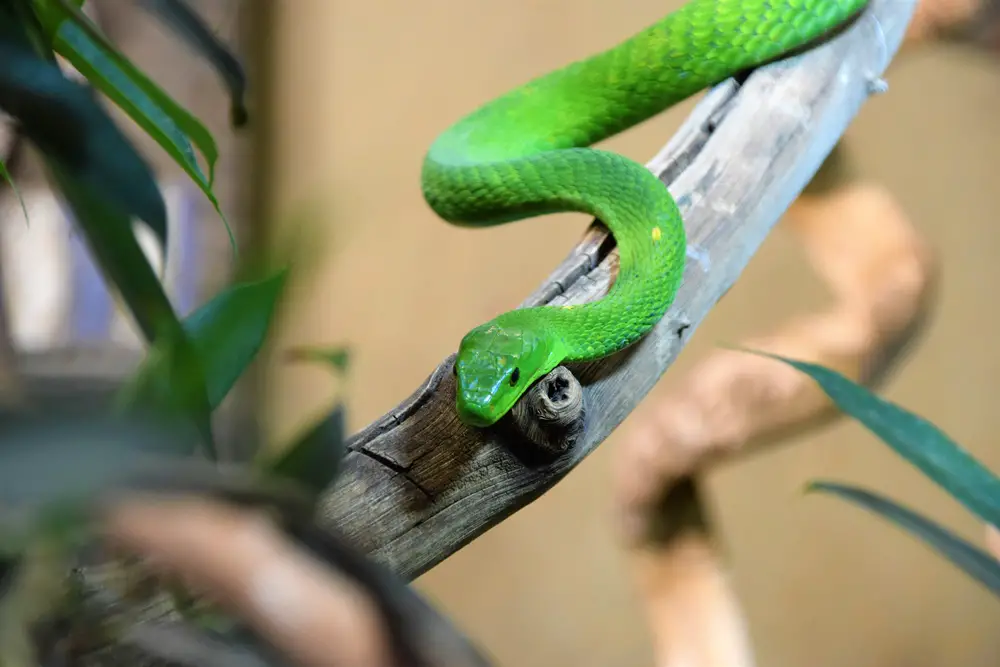
However, snake owners who are keen on breeding or simply want to house more than one snake together need to make sure they get the right vivarium set up.
This basically means using a large glass tank with proper ventilation to allow heat in and out of the unit while still ensuring humidity levels remain high enough for your snake’s well-being.
Conclusion
Be sure to clean the water bowl every day and change the water as needed. You can use a pet-safe disinfectant or bleach solution, but make sure it is diluted and not straight up because this will harm your reptile!
Key points for how to clean a reptile water dish:
1. Regular Maintenance:
- Frequency: Clean the water dish daily or every other day to prevent bacterial growth and contamination.
- Empty and Refill: Empty the dish completely and refill it with fresh, clean water.
2. Cleaning Steps:
- Scrubbing: Use a reptile-safe disinfectant or mild soap and a dedicated scrub brush or toothbrush to scrub the water dish thoroughly.
- Rinsing: Rinse the dish with hot water to remove any soap residue. Ensure the dish is entirely free of cleaning agents.
3. Deep Cleaning:
- Periodic Disinfection: Periodically, perform a deeper clean by soaking the water dish in a diluted bleach solution (1-part bleach to 10 parts water) for 10-15 minutes. Rinse thoroughly afterward.
- Vinegar Soak: Alternatively, soak the dish in a vinegar-water solution (equal parts vinegar and water) for a few hours to disinfect it naturally.
4. Drying and Reuse:
- Complete Drying: After cleaning, ensure the water dish is completely dry before refilling to prevent bacterial growth.
- Avoid Chemical Residues: Ensure no residual cleaning agents or odors remain that could affect your reptile’s health.
5. Additional Tips:
- Separate Cleaning Tools: Use separate cleaning tools designated only for reptile care to avoid cross-contamination.
- Replace Damaged Dishes: Discard and replace any cracked or damaged water dishes as they can harbor bacteria.
6. Considerations for Different Reptiles:
- Large vs. Small Reptiles: Adjust the size of the water dish based on your reptile’s size to prevent accidental drowning or spillage.
- Aquatic vs. Terrestrial: For aquatic species, regularly clean not only the dish but also the filtration system if applicable to maintain water quality.
7. Health Check:
- Monitor for Debris: Regularly inspect the water dish for leftover food, feces, or other debris, removing them promptly.
- Reptile Behavior: Keep an eye on your reptile’s behavior; changes in drinking habits could signal water quality issues.
8. Routine Schedule:
- Establish a Routine: Incorporate cleaning the water dish into a regular cleaning schedule for your reptile’s enclosure.
A clean water dish is crucial for maintaining your reptile’s health. By following these steps and maintaining a consistent cleaning routine, you can ensure your reptile has access to fresh, uncontaminated water at all times. Always prioritize hygiene to promote your reptile’s well-being.
Further Reading:
- Best Turtle Substrate for Your Pet Tank
- Best Substrate for Russian Tortoise
- 6 Best Substrate for Leopard Tortoise
- Best Substrate for Bearded Dragons
- Best Bioactive Substrate for Leopard Gecko

